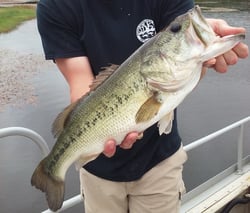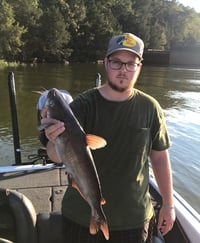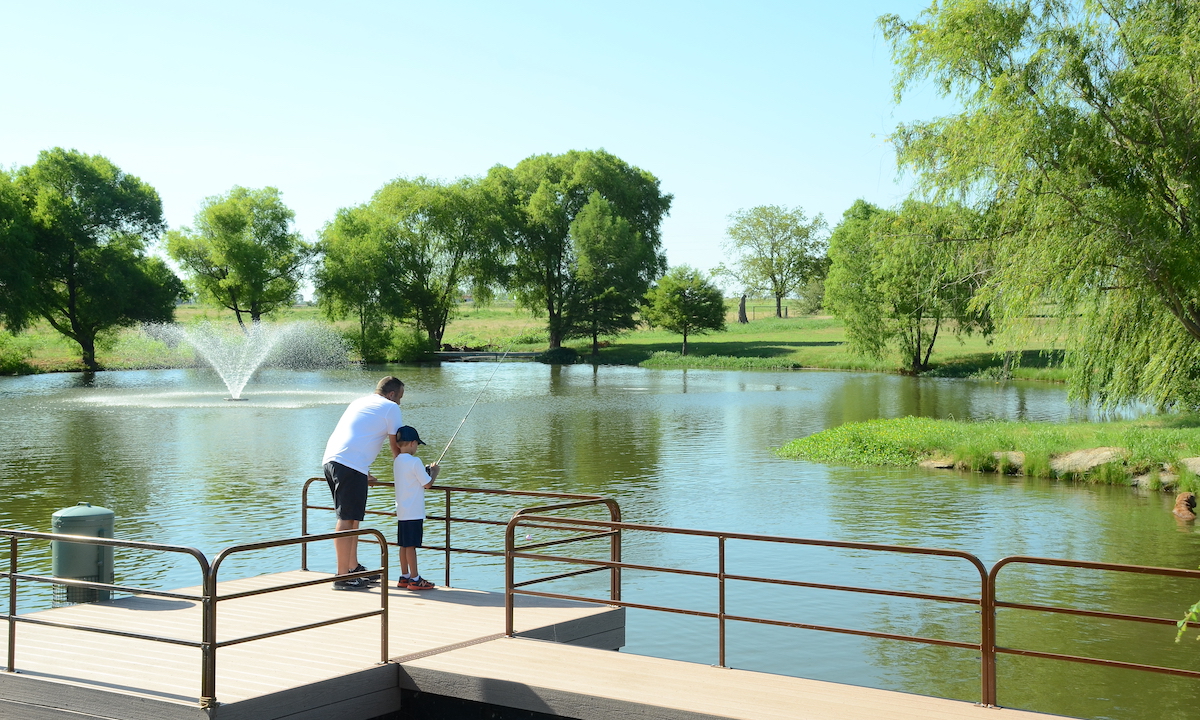Decreasing Competition for Food Helps Bass Growth

A bass harvest is a management technique that can significantly impact your pond's ability to grow trophy-size Bass.
Conducting an annual bass harvest reduces the amount of competition between the Bass in your pond and, when done correctly, can help to mitigate below-average genetics in your pond.
When you reduce the amount of competition from lower-quality fish in your pond, the Bass with a genetic predisposition for growth gain access to more resources.
Access to more and better resources allows the remaining Bass to grow at faster rates and have better fitness while doing so.
In addition, when these fish begin to reproduce, they'll pass their genes onto the next generation, who will then have very similar traits to their parents.
How Many Bass Should Pond Owners Harvest Each Year?
Our general rule of thumb for ensuring the best genetic potential for growth is to remove 10-15 pounds of Bass per acre per year.
Enhancing Cover Increases Bass Size and Growth Rate
The third significant management practice for raising trophy Bass is providing adequate cover for the Bass to ambush baitfish and conserve energy.
Pond King’s fisheries biologists recommend covering 10-15 percent of your pond's surface area with usable habitat for your Bass.
Whether you opt for organic materials, like trees or vegetation, or artificial habitat, you need to locate the habitat in various water depths throughout your pond.
By doing so, the Bass can use the structures throughout different seasons of the year and throughout their different life stages. Increasing ambush opportunities will help the Bass conserve energy, thereby accelerating their growth rates.
Pond Management Tactics for Catching Bass with Every Cast
If the goal for your pond is to have a pond where you can catch high numbers of fish every time you go fishing with friends or family, you'll need to focus on a different set of fisheries management tactics.
Specifically, in this scenario, you want to provide just enough forage for your Bass.
Reduced Feeding Opportunities Keep Pond Bass Looking for a Meal
Remember, in a resource-rich environment, Bass tend to get lazy, so they are harder to catch. And, don't worry about reducing competition with an annual harvest if you want to catch Bass frequently.
Not only will this keep the individuals from getting lazy, but it'll also increase the size of the population from which you have a chance to catch a fish.
In this type of fishery, it will be doubtful that you'll grow a trophy-class bass, but you'll have a lot of fun because you'll catch a lot of fish.
Managing a Catfish and Bluegill Pond

If your goal is catching Catfish and Bluegill, you are in luck because accomplishing this goal requires minimal management. All you need to do is stock your fishery with the correct amount of Channel Catfish and Hybrid Bluegill.
If you want to take it a step further, you can add fathead minnows to your pond, too.
Creating this type of fishery is a great way to get younger kids hooked on fishing. The Bluegill are usually easy to catch, and when kids hook a catfish, they get excited because they are catching something bigger than a Bluegill.
Consider Pellet Feeding to Enhance Pond Fishing for Kids
In fact, if your goal is to delight the kiddos, you might even consider supplemental feeding with a pelleted feed. You can do this manually by tossing the feed on the water's surface or using an automatic fish feeder. We like the automatic feeder because the fish will become trained by the sound it makes. Then, when you set it off remotely, the fish will come to feed - which kids love.
Plus, supplemental feeding will provide your fish with a steady food source and help them reach bigger sizes quicker.
As you can see, for every goal, there is a management plan, and Pond King can help. Still not sure what's appropriate for your pond? Check out the interactive Pond King Pond Management Planning Guide, give us a call or contact us and we'll hook you up.
See y'all down at the pond!






